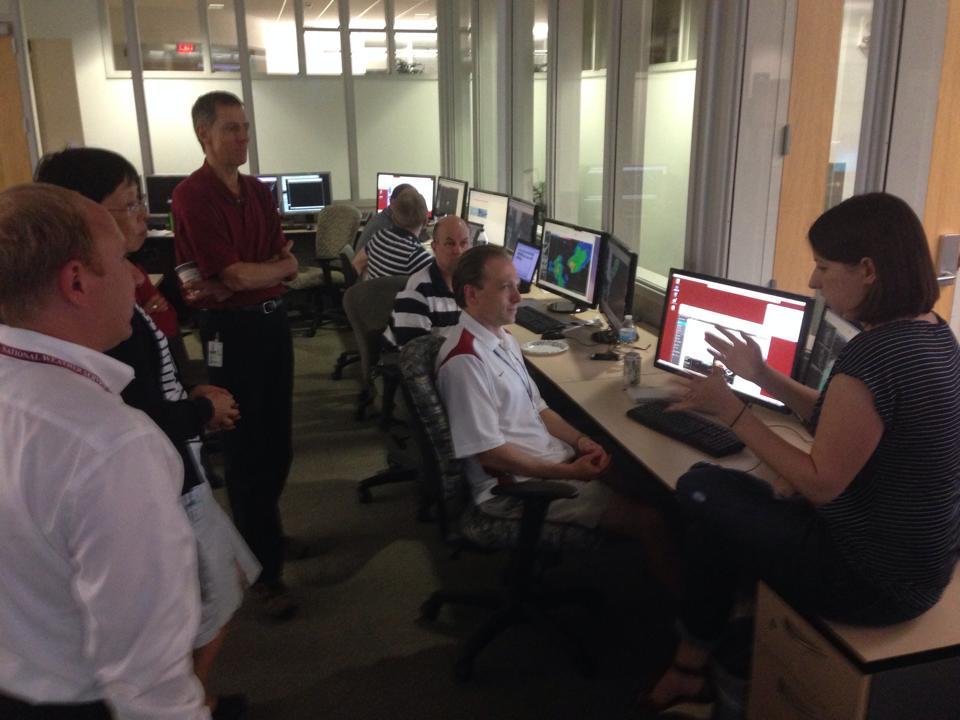NSSL is hosting the six-week Experimental Warning Program (EWP) Spring Program beginning today, 28 April 2008, in the NOAA Hazardous Weather Testbed at the National Weather Center in Norman, Okla. The mission of the EWP Spring Program is to evaluate the accuracy and operational utility of new science, technology, and products in a testbed setting, and to promote collaboration between NSSL scientists and operational meteorologists. NSSL’s goal is to provide an arena for feedback on their experimental products and improve them prior to their potential implementation into NWS severe convective weather warning operations.
The EWP has three primary projects geared toward WFO severe weather warning operations. The first is an evaluation of phased array radar (PAR) technology in Norman, also part of the 2008 Spring Real-Time Phased Array Radar Demonstration, where forecasters will evaluate PAR data in real-time. The second project also involves radar, and is to evaluate the operational utility of a dense network of 3-cm radars (Collaborative Adaptive Sensing of the Atmosphere-CASA) in Central Oklahoma. Both of these projects will be active when severe weather is affecting Central Oklahoma.
Finally, the third project is an evaluation of the utility of gridded probabilistic warnings before they are considered for NWS warning operations. This project is less dependent on local weather since participants can access the needed radar and other data sets remotely for nearly anywhere in the U.S.
Operational activities will take place Monday through Thursday each week; with an end-of-week summary debriefing taking place on Fridays. An internal blog is available where daily outlooks, daily and weekly summaries, and even live blogging will be provided during real-time Intensive Operations Periods.
This week participants are from WFO’s in Flagstaff, Ariz., Columbia, S.C., Wichita, Kan., the NWS Western Region Headquarters, the NWS Warning Decision Training Branch, The University of Oklahoma, the University of Massachusetts, the University of Virginia, and NSSL’s support team.
You can learn more about the EWP here:
http://ewp.nssl.noaa.gov/
Background: The EWP is part of NOAA’s Hazardous Weather Testbed Spring Experiment and is focused on detecting and predicting mesoscale and smaller weather hazards on time scales of minutes to a few hours and on spatial domains from several counties to fractions of counties.
Significance: An effective NWS severe weather forecast and warning program is dependent on providing public and others with critical weather information needs with sufficient advance notice of impending hazardous weather.


